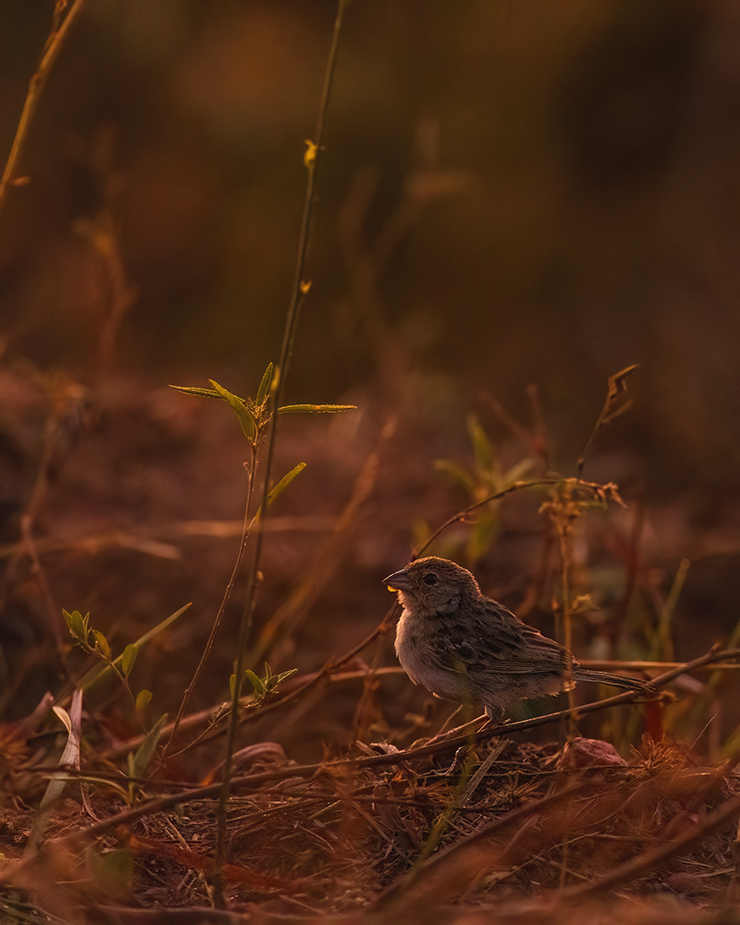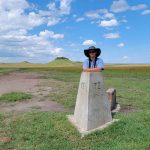
The millions of stars and galaxies twinkling over the Rupununi Savanna in Guyana seem to reluctantly fade into a gradually lightening sky as the eastern horizon reddens. The Pakaraima mountains slowly materialize from the darkness, silently encircling the flatness of the savanna. This places feels almost as if herds of zebra and giraffe are just out of view. But we are on the lookout for one of Guyana’s famed giants, the Giant Anteater – which uncharacteristically never showed. Nevertheless, I had heard many stories of people falling in love with Guyana’s interior, and I was beginning to understand why.

A handheld photo of the sky as we were leaving our lodge. Very grainy, but most of those grains are stars!
While still in the pre-dawn, we paused at a junction to stretch our legs a bit. We were on the road to the village of Karasabai, the other road went on directly to Brazil. To our backs, the sky was getting marginally brighter. I was surprised at how gently the sun rose. Some movement in the grasses almost to our feet pulled me out of gazing and back into birding mode. These tiny birds were barely distinguishable from the ground – but they were certainly birds. Grassland Sparrow, Leon says excitedly.

Grassland Sparrow
In the distance, the first of many Crested Caracaras sailed across the parched landscape. We continued on as once light began to fill the spaces, we began to perceive more and more avian activity. We hadn’t been moving for more than a minute before we came upon a Lesser Yellow-headed Vulture perched in a roadside tree. Savanna Hawks and Crested Caracaras topped almost every fencepost and shrub as we hurtled toward a field with around thirty large, white birds.

Lesser Yellow-headed Vulture

Believe me, this is a Savanna Hawk. I tried waiting for the sun to rise a little more, but by the time it did, it was far too bright to point a long lens at.
It may surprise some that one of my targets when visiting the Rupupuni was photographing a Fork-tailed Flycatcher. After all, they are annual visitors to my native Trinidad and Tobago. Well, the Latin name of the species is Tyrannus savana and what better savanna to photograph it in than the Rupununi?

Fork-tailed Flycatcher

Trees near and far had to be examined carefully, this distant perch featured a comfortable White-tailed Kite.
After much distraction, we finally arrived at the field with all the activity that I mentioned earlier. The large white birds were mostly Jabiru with some Maguari Storks in the mix. Closer looks revealed large numbers of White-faced Whistling Ducks as well as a few American Golden-Plovers. Mounds of dirt that eventually started moving turned out to have bright yellow eyes when viewed through binoculars – Double-striped Thick-knees.

Jabiru

Maguari Stork

Double-striped Thick-knee
I spent considerable time getting lost photographing these species in this otherworldly landscape as the dawn progressed. Too much time, perhaps, as I was ultimately urged back into the vehicle to continue our journey into Karasabai. By now, the sun began to warm the skin considerably, and I understood the urgency to arrive at our destination.

It was impossible to not stop when we saw this absolutely gorgeous Aplomado Falcon along the road.













Pure art, these photos. Wow…
Many thanks, Peter!